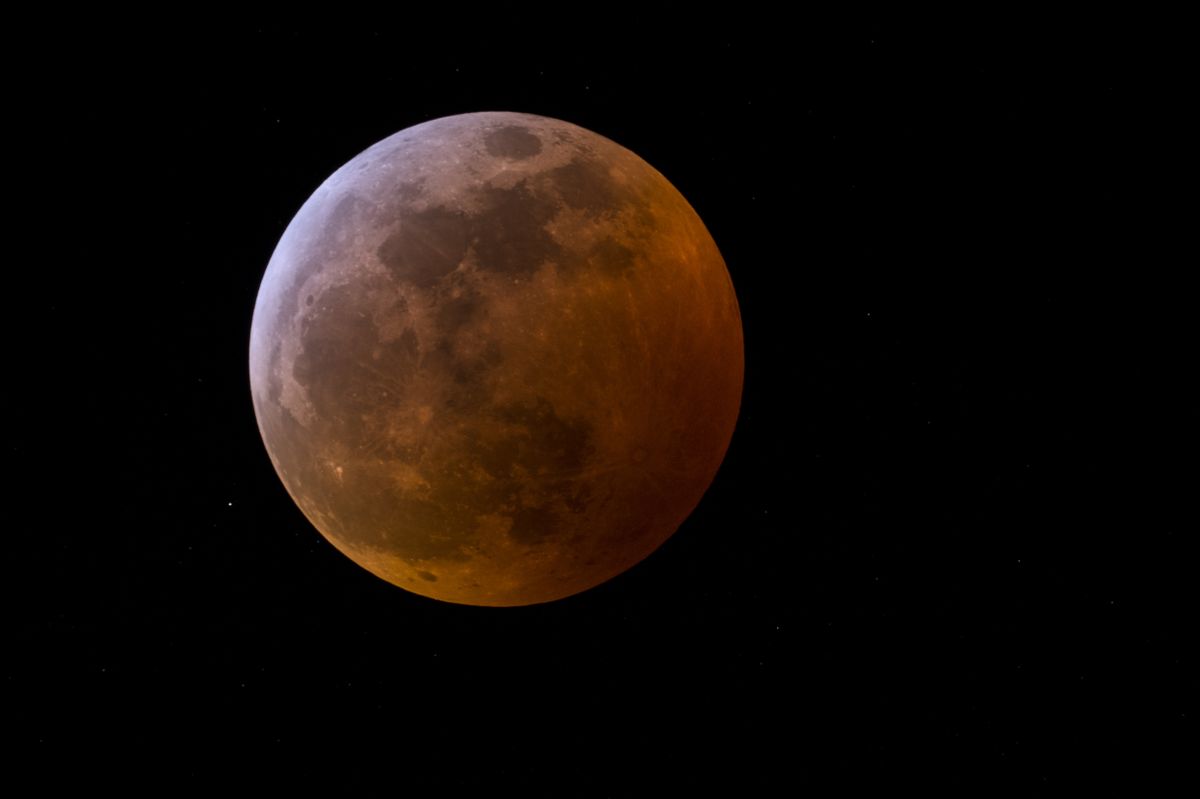
The full moon on Wednesday (May 26) will be something to behold, as the only total lunar eclipse of 2021 arrives together with the year's biggest "supermoon."
Skywatchers in much of the world will have a chance to see a slightly larger-than-average full moon temporarily appear red during the so-called "Super Flower Blood Moon." But for those in parts of the world where the eclipse isn't visible — or where clouds foil the view — there will be several free webcasts showing live views of the eclipse online.
During the Super Flower Blood Moon, the full moon of May (known as the Flower Moon) will pass through Earth's shadow, causing it to appear red. This is why total lunar eclipses are commonly called "blood moons." At around the same time, the moon will reach perigee, or the closest point to Earth in its current orbit. This will make it appear slightly bigger than an average full moon, making it a "supermoon," too.
Super Flower Blood Moon 2021: When and how to see the total lunar eclipse
Griffith Observatory
Weather permitting, the Griffith Observatory in Los Angeles plans to stream live views of the Super Flower Blood Moon on Wednesday (May 26) beginning at 4:45 a.m. EDT (0845 GMT) — just two minutes before the penumbral phase of the lunar eclipse begins. The broadcast will end at 9 a.m. EDT (0100 GMT), shortly after the last partial phase of the eclipse has ended.
You can watch the Griffith Observatory's webcast live in the window above, courtesy of the observatory, or tune in via YouTube. Due to the ongoing pandemic, the observatory said on its website that it will not host a public, in-person event for this eclipse as it has done in the past.
Lowell Observatory
The Lowell Observatory — where the dwarf planet Pluto was famously discovered — will also broadcast live views of the eclipse from multiple telescopes at its facility in Flagstaff, Arizona.
Starting at 5:30 a.m. EDT (0930 GMT), "Lowell educators will show you live views of the eclipse through our 14” Planewave telescope and wide-view portable Vixen telescopes," the observatory said in a statement. "Educators will also discuss the science of eclipses, the best ways to view them, Lowell’s history with the Moon, and much more!"
This event ends at 7:25 a.m. EDT (1125 GMT). You can watch it live in the window above, courtesy of Lowell Observatory, or on YouTube.
The Virtual Telescope Project
The Virtual Telescope Project, an online observatory founded by astrophysicist Gianluca Masi of the Bellatrix Astronomical Observatory in Italy, will stream two live broadcasts of the big lunar event: one for the eclipse and another for the supermoon. Astrophysicist Gianluca Masi, founder of the Virtual Telescope Project, will provide live commentary.
First, on Wednesday (May 26), the Virtual Telescope will webcast live views of the lunar eclipse, beginning at 6 a.m. EDT (1000 GMT). The webcast will feature shots from astrophotographers in Australia, New Zealand and the Americas. The moon sets in Rome at 5:34 a.m. local time, or 14 minutes before the moment of maximum eclipse, so the best views will come from these remote cameras.
Then at 3 p.m. EDT (1900 GMT), Masi returns with a second live stream to show the biggest supermoon of the year rising over the skyline of Rome. You can watch both events live in the window above, courtesy of the Virtual Telescope Project, or directly via Masi's YouTube channel.
Time and Date
Time and Date, an interactive website that offers a variety of tools for skywatching and time zone conversions, will also provide a live webcast of the Super Flower Blood Moon, beginning at 5:30 a.m. EDT (0930 GMT). The webcast will feature live views from around the world, and you can follow along with the photographers' adventures in this live blog.
You can watch it live here in the window above, courtesy of Time and Date, or directly via YouTube. Also, to find out what the eclipse will look like from any given location, be sure to check out Time and Date's eclipse maps and calculators.
| Event | Time |
|---|---|
| Penumbral eclipse begins | 4:47 a.m. EDT (0847 GMT) |
| Partial eclipse begins | 5:44 a.m. EDT (0944 GMT) |
| Full eclipse begins | 7:11 a.m. EDT (1111 GMT) |
| Maximum eclipse | 7:18 a.m. EDT (1118 GMT) |
| Full eclipse ends | 7:25 a.m. EDT (1125 GMT) |
| Partial eclipse ends | 8:52 a.m. EDT (1252 GMT) |
| Penumbral eclipse ends | 9:49 a.m. EDT (1349 GMT) |
Email Hanneke Weitering at hweitering@space.com or follow her on Twitter @hannekescience. Follow us on Twitter @Spacedotcom and on Facebook.
The Link LonkMay 23, 2021 at 07:15PM
https://www.space.com/super-flower-blood-moon-2021-webcasts
'Super Flower Blood Moon' webcasts: How to watch the supermoon eclipse of 2021 online - Space.com
https://news.google.com/search?q=Flower&hl=en-US&gl=US&ceid=US:en

No comments:
Post a Comment